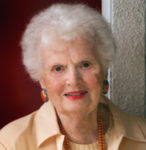By Natasha Josefowitz, ACSW, Ph.D.

LA JOLLA, California — Over eighty percent of communication is nonverbal. We read body language as a means of understanding what the other person is saying. Look in the mirror with a glazed stare, then—without changing your stare—smile, and you will see how fake it is; now get your eyes to smile with your mouth and it looks genuine. I mention this experiment to show you how difficult it is to read someone’s face with a mask. When in a Zoom meeting, one looks at the speaker who is not interacting with anyone, but with the camera. The rest of the participants have an immobile face in their little rectangles. There is no eye-to eye-contact with anyone, and no one can know what anybody is thinking or feeling. Even when talking with another person on FaceTime, there is a twenty second delay in the transmission, which is enough to miss important nonverbal cues.
When we are in a conversation with another person our bodies begin to synchronize with each other, our gestures and facial expressions mirror each other. It is when this happens that we begin to truly hear one another. When we are face-to-face, we unconsciously pick up small changes, which give us clues as to what the other is feeling. It might be a slight flush, an enlargement of pupils, a change in voice pitch, a stiffening of the spine, all unconscious reactions to either the subject or the tone of the conversation. We are constantly monitoring peoples’ responses to what we are saying. In texting and emails, we miss the most important part of the interaction, which is the impact our words are making.
This process is amplified in group settings. When I enter a group, I look for who has eye contact with whom, whose voice is the loudest, who is restless, who initiates, who interrupts, who is being interrupted. The list of what we perceive and base our judgments on continues throughout the meeting and gives us the information about the direction the group is taking, its friendliness, trust level, and degree of competitiveness. This information is challenging to ascertain via Zoom.
Wearing a face mask hides one of the two most important parts of communication: the mouth. The other crucial part—the eyes—often hidden behind sunglasses which further impairs communication. Wearing masks makes it impossible for people to lipread. Also speech is muffled behind a mask. I wear a hearing aid and find it difficult to understand what people are saying; yet we cannot take our masks off to talk, for if we did that, virus droplets could escape. When I meet another resident in our hallways I ask, “How are you?” The answer is often just a shoulder shrug. Sometimes I blow a kiss from my hidden mouth.
Women in Muslim countries have worn the veil for centuries, but it comes off at home and is not worn when Muslim women are together without men present. Hand gestures remain visible and women can touch each other, which is also a form of communication.
An important part of interaction between people is touch. We humans need to touch each other before we can communicate, hence the handshake or hug. Touching releases endorphins; it relaxes us and permits us to start bonding. Touches such as fist bumps, elbow bumps, pats, taps, squeezes, all these gestures convey messages of friendliness and trust. Smiling and laughing together increases bonding. Crying together forms strong bonds due to our willingness to show vulnerability in front of each other.
When online, we monitor our emotions and remain guarded. It is more difficult to show strong disagreement or much enthusiasm or distress or empathy when we sit expressionless in our little Zoom boxes, waiting to be unmuted and allowed to speak, waiting for our frame to be highlighted, indicating that we are next to speak.
At times I have called a friend after the meeting to check how he or she is doing. Although the gesture was appreciated, what was really needed was an arm around a shoulder, a hug, or simply holding a hand. We have all become poorer from the lack of opportunities to touch and be touched. I worry that the part of the brain which is good at picking up all these subtle cues will atrophy from disuse. When the pandemic is over it will feel good to embrace each other.
*
© Natasha Josefowitz. This article appeared initially in the La Jolla Village News. You may comment to natasha.josefowitz@sdjewishworld.com